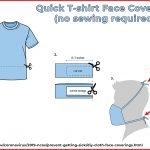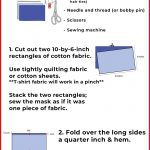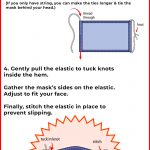CDC Guide on How to Make Face Masks
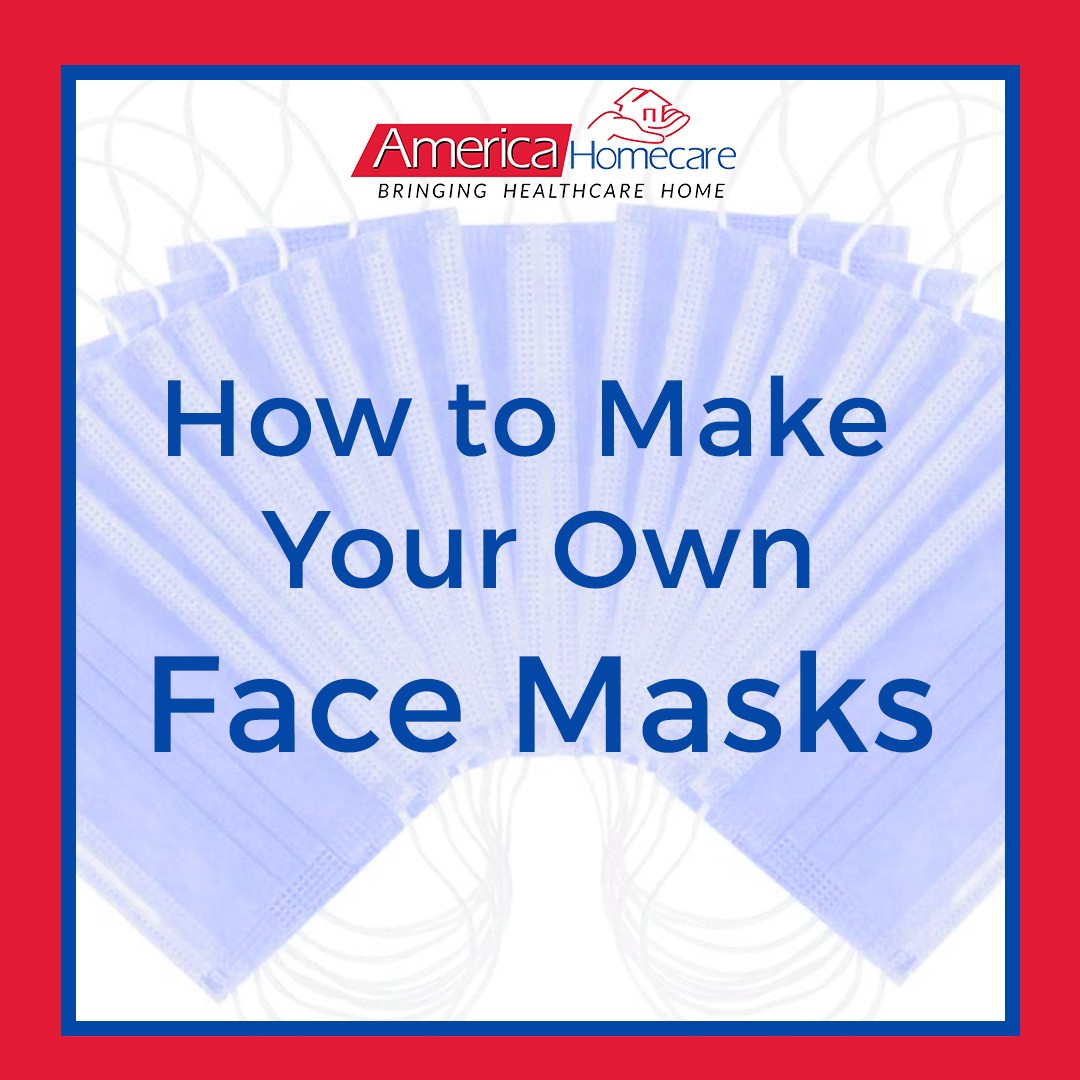
CDC Guide on How to Make Face Masks | America Homecare
IMPORTANT: In the state of New York, you are required to wear a face mask when in public.
The CDC has provided a corona protection guide from all their findings. However, coronavirus or COVID-19 is a newly discovered virus. Experts constantly learn more and more about it. At the moment, there is no vaccine. Taking proper steps to protect yourself and others can lower the spread significantly.
Please note that people who are at higher risk for COVID-19 include the following groups:
- 65+ year olds
- nursing home or LTC-facility communities
- people with chronic lung disease or moderate to severe asthma
- people with serious heart conditions
- those who are immunocompromised (cancer treatment, smoking, bone marrow or organ transplantation, immune deficiencies, poorly controlled HIV/AIDS, and prolonged use of corticosteroids and other immune weakening medications are some of the things that cause one to be immunocompromised)
- people with severe obesity (BMI of 40+)
- people with chronic kidney disease undergoing dialysis, liver disease, or diabetes
Other people who are at risk are pregnant people and people experiencing homelessness.
Face Masks and Coverings FAQs
What is a face covering?
A face covering is any well-secured paper or cloth (like a bandana or scarf) that covers your nose and mouth.
Who must wear a face covering?
All New Yorkers are required to wear face masks when out in public. You also need to wear face masks if you are in a living facility with shared kitchens, bathrooms, or other common spaces.
People who are sick must wear face masks when at home with others and if they are seeking medical care outside or important supplies of the home.
Should cloth face coverings be washed or cleaned regularly? How regularly?
Yes. They should be washed often depending on the frequency of use.
How does one safely sterilize/clean a cloth face covering?
A washing machine will properly wash a face covering or face mask.
How does one safely remove a used cloth face covering?
You should be careful not to touch your eyes, nose, and mouth when removing your face coverings. You must wash your hands immediately after removing. (For a full list of FAQs on face masks, visit the NYC Health’s press release on face coverings.)
How to Wear Cloth Face Masks
Proper cloth face masks and face coverings should have all the following qualities.
- fit snugly but comfortably against the side of the face
- are secured with ties or ear loops
- include multiple layers of fabric
- allow for breathing without restriction
- are able to be laundered and machine-dried without damage or change to shape
How to Make Face Masks
Quick T-shirt Face Covering (no sewing required)
Materials Required:
- T-shirt
- Scissors
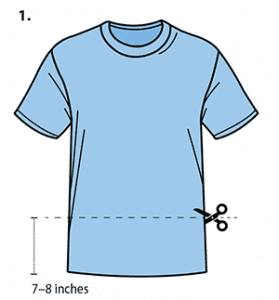
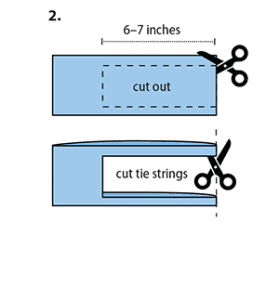
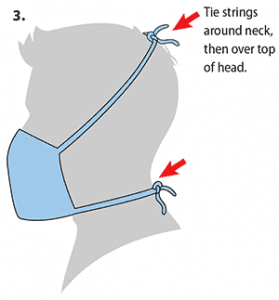
Bandana Face Covering (no sewing required)
Materials Required:
- Bandana (or square cotton cloth approximately 20″ by 20″)
- Rubber bands (or hair ties)
- Scissors (if you are cutting your own cloth)
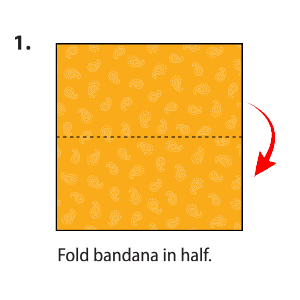
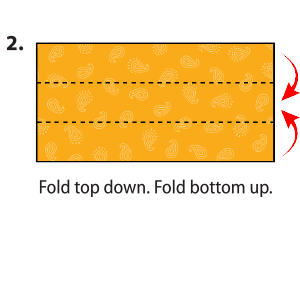
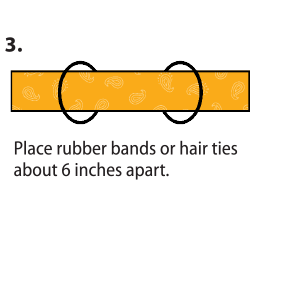
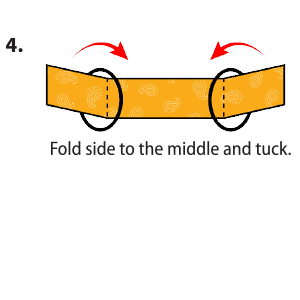
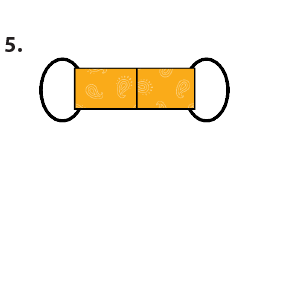

Sewn Face Covering
Materials Required:
- Two 10″ by 6″ rectangles of cotton fabric
- Two 6″ pieces of elastic (or rubber bands, string, cloth strips, or hair ties)
- Needle and thread (or bobby pin)
- Scissors
- Sewing machine
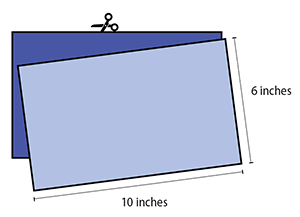
1. Cut out two 10-by-6-inch rectangles of cotton fabric. Use tightly woven cotton, such as quilting fabric or cotton sheets. T-shirt fabric will work in a pinch. Stack the two rectangles; you will sew the mask as if it was a single piece of fabric.
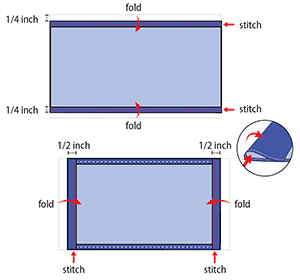
2. Fold over the long sides ¼ inch and hem. Then fold the double layer of fabric over ½ inch along the short sides and stitch down.
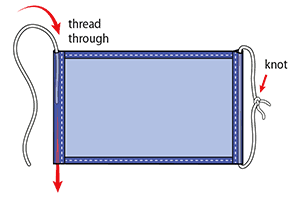
3. Run a 6-inch length of 1/8-inch wide elastic through the wider hem on each side of the mask. These will be the ear loops. Use a large needle or a bobby pin to thread it through. Tie the ends tight. Don’t have elastic?
Use hair ties or elastic head bands. If you only have string, you can make the ties longer and tie the mask behind your head.
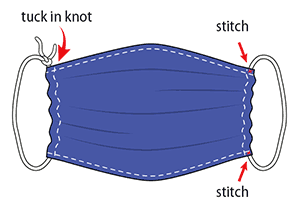
4. Gently pull on the elastic so that the knots are tucked inside the hem. Gather the sides of the mask on the elastic and adjust so the mask fits your face. Then securely stitch the elastic in place to keep it from slipping.
Infographics for Print
Resource links:
https://www.cdc.gov/coronavirus/2019-ncov/prevent-getting-sick/diy-cloth-face-coverings.html
https://www1.nyc.gov/assets/doh/downloads/pdf/imm/covid-19-face-covering-faq.pdf
To see previous posts we’ve covered with some helpful tips and information on the coronavirus (COVID-19), be sure to visit our category page or you can view this post with all the infographics for easy printing or reviewing.

Get care from someone you trust
Do you want to receive care from your
loved one while they are compensated
by Medicaid?
